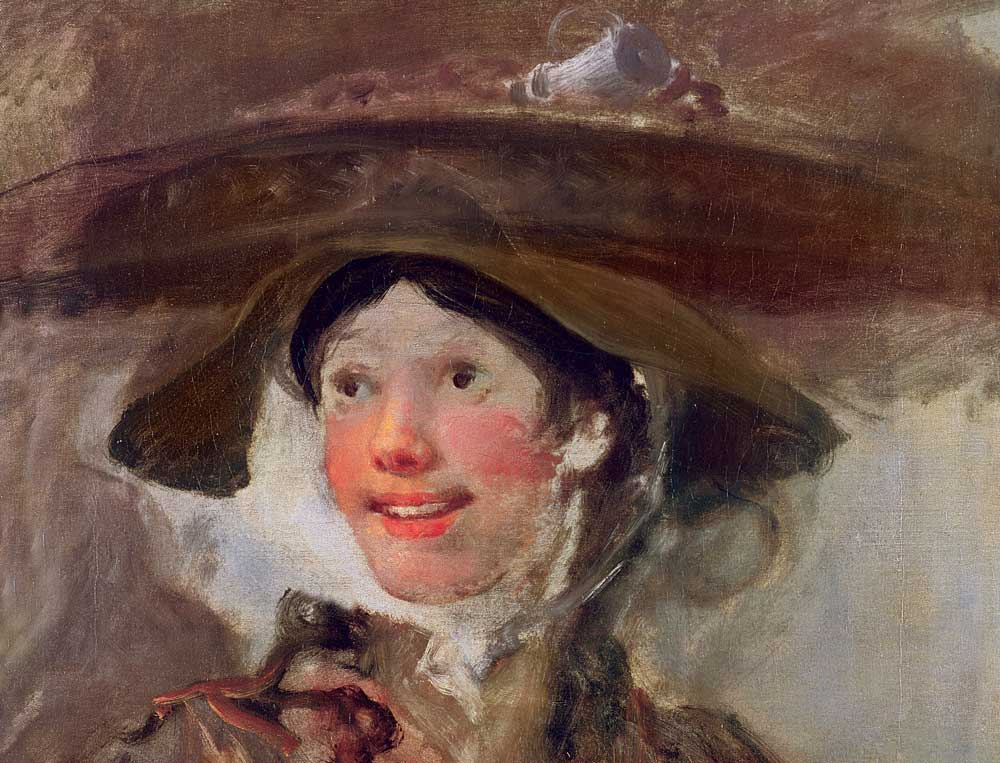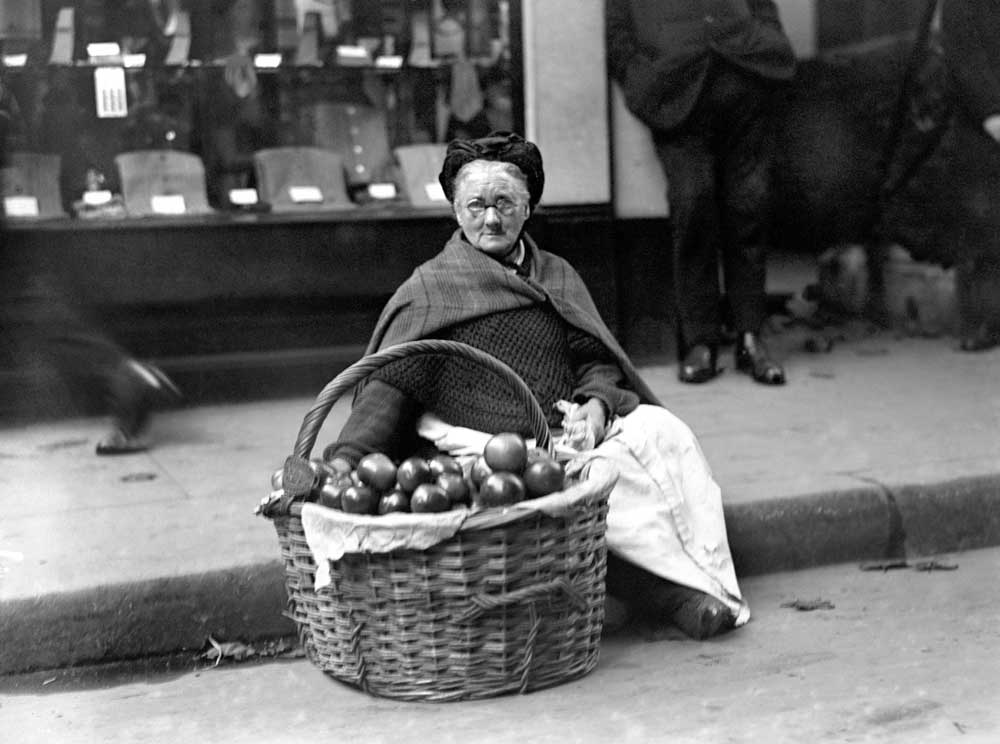Hawk this Way | History Today - 6 minutes read

One Saturday morning in July 1897, John Hurley opened his fruit stall on the side of Essex Road, a busy artery a mile north of London’s old centre. A couple of children walked up and asked for some ‘specks’, prompting Hurley to slide out a box of greengages and pears from under the counter. Specks were fruit that were damaged but sound. Little did Hurley know, the neighbourhood health inspector, Mr Fortune, was lurking. The official approached the stall and confiscated the fruit, claiming it was ‘rotten and unfit for food’. The following week, Hurley was summoned to the nearest police court and found guilty. For giving his customers what they wanted, he was fined more than most street sellers earned in a month.
According to Charles Booth’s survey of working-class life, carried out between 1889 and 1903, there were more than 12,000 hawkers like Hurley in late Victorian London. In a metropolitan population of 6.5 million, this was a drastic underestimate. All over the capital, street sellers carried baskets, erected temporary shops on the roadside, led donkeys pulling barrows and congregated in makeshift markets. Though they traded without formal sanction and frequently fell foul of the law, they were tolerated because they were useful. Dealing oysters, sprats, apples, oranges, pies, sandwiches, cakes and more, these women, men, boys and girls were crucial in keeping their fellow Londoners fed.
The heyday of street selling in London, from the late Elizabethan age to the brink of the First World War, was a period of remarkable transformation for the city. It burst its medieval bounds to become a sprawling conurbation. Its roads filled with fast-moving transport, such as hackney coaches, omnibuses and trams. From the 1830s, railways allowed the tentacles of the food chain to reach deep into the country and beyond. Hawkers were affected by all these changes, but also felt at first hand the persistent frustrations of urban existence. While many streets were eventually paved, properly lit and regularly cleaned, hawkers still slogged along muddy, rough highways and squinted down dark and narrow alleys. They dodged ever-worsening traffic. Women, in particular, continued to suffer harassment and violence as they wandered alone. Much of the population always struggled, like street sellers, in badly paid, casual work.
Throughout this time London relied on hawkers, although technically they traded in the shadows. In the 17th century, the rules that governed food selling in the capital aimed to keep all exchange in fixed locations, either official markets like Cheapside and Leadenhall or shops run by privileged retailers, such as butchers, fishmongers and greengrocers. This left street sellers, who sold their goods wherever they saw fit, in a precarious place. As the City aldermen grappled with a cocktail of social problems, including a surging population, crime and rising food prices, hawkers became a scapegoat. In March 1612, the common council passed a bylaw to deal with the ‘Great & excessive number of men women widowes & maides’ causing disorder by carrying ‘oysters fishes fruite Roots, & other victuals about the streets’. Henceforth, only licensed hawkers, aged at least 30 and the wife or widow of a freeman, were allowed to do business. They had to pay sixpence for a tin badge to be worn ‘in Open sight’ and adhere to onerous regulations.

However, severe as these strictures were, the bylaw seems to have been enforced with little energy. Badges were minted and constables and beadles instructed, but prosecutions for unlicensed hawking were thin on the ground. As long as they behaved, not blocking traffic with baskets, barrows and stalls or getting mixed up in other offences such as prostitution and theft, they were left to keep on trading. During the 1660s, arguments raged about who was allowed to stock up at the seafood market, Billingsgate. The aldermen listened to petitions from ‘poore women’ hawkers and struck a compromise that gave them equal access. In 1697, when Parliament passed an act for licensing pedlars nationwide, city food hawkers were exempted. Around then, the writer John Houghton challenged critics of street sellers to consider ‘what would become of our milk and mackerel, our other fish, oranges, and lemons, &c if no body could buy a single penny-worth, unless they went to a market or a shop for them’.
This delicate balance prevailed for two more centuries. While hawkers never had formal permission and were careful to remain inconspicuous, their work feeding the city was increasingly valued. Magistrates dealt pragmatically with their transgressions. Artists, ballad-writers and composers immortalised street characters and their advertising calls in the prints and music of a genre called the Cries of London. The unauthorised street markets, including Whitecross Street, the New Cut and Petticoat Lane, became where the inner city masses bought most of their essentials. As it grew into the world’s pre-eminent metropolis, London relied on activities like street selling, which developed in ways that its rulers could not control.
Ultimately this balance was unsettled. When he was fined for his specks, John Hurley was suffering from the symptoms of a gradual but fundamental shift. Over the 19th century, the policing of hawking became more prescriptive, as even the length and breadth of hawkers’ barrows were controlled and stricter hygiene standards gave hawkers and their customers little leeway to decide whether their produce was satisfactory. In 1927, borough councils were empowered to license all street sellers within their jurisdictions and oversee the street markets. The role of hawkers diminished too. Over the past century, the proliferation of the motor car, the fall in the central London population and the emergence of the supermarket have signalled the end of Britain’s brand of street food.
Today, London feels quite different from other cities around the world where hawkers’ cries still ring out. But, until quite recently, the capital closely resembled those thriving and dynamic centres. And yet, we might ask whether London has really changed that much. As the history of street selling shows, cities function on multiple levels. Living in close proximity to hundreds of thousands, sometimes millions, of neighbours is often awkward and difficult. City governments claim to be making life easier; for ordinary people, the priority is rubbing along.
Charlie Taverner is a research fellow at Trinity College Dublin and the author of Street Food: Hawkers and the History of London (Oxford University Press, 2023).
Source: History Today Feed